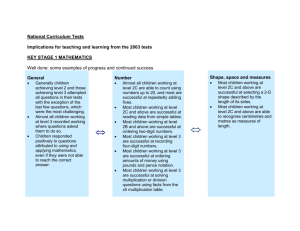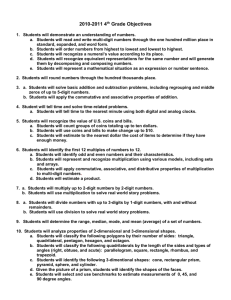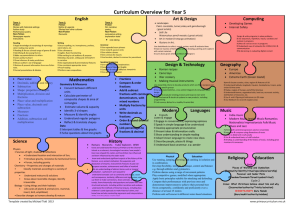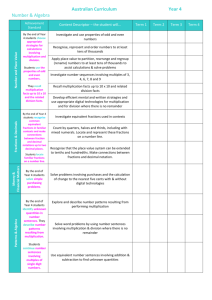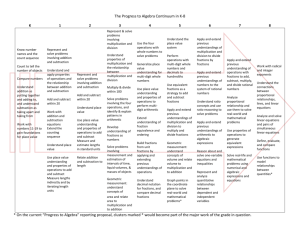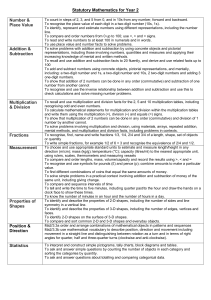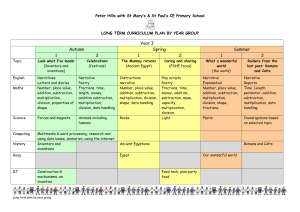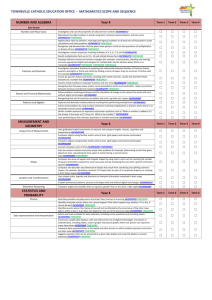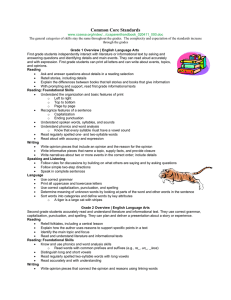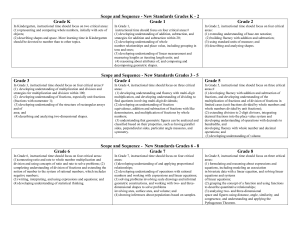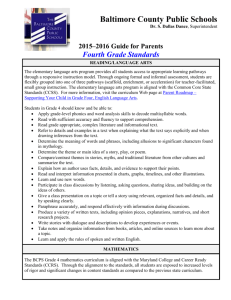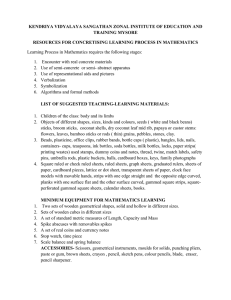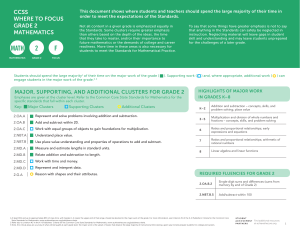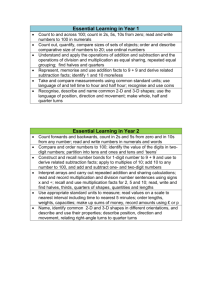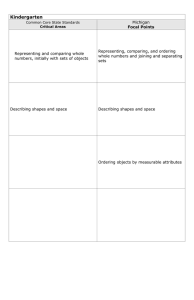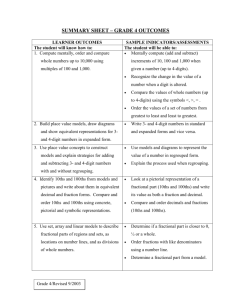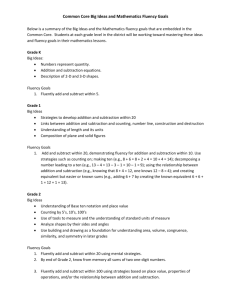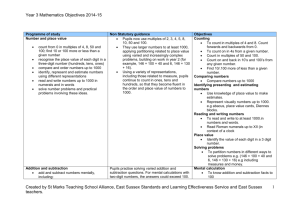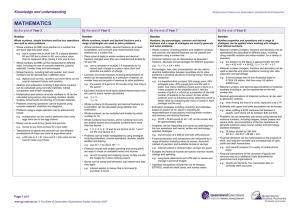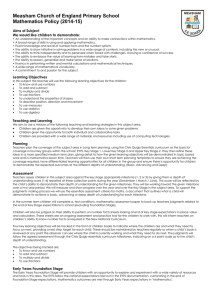Math standards K
advertisement
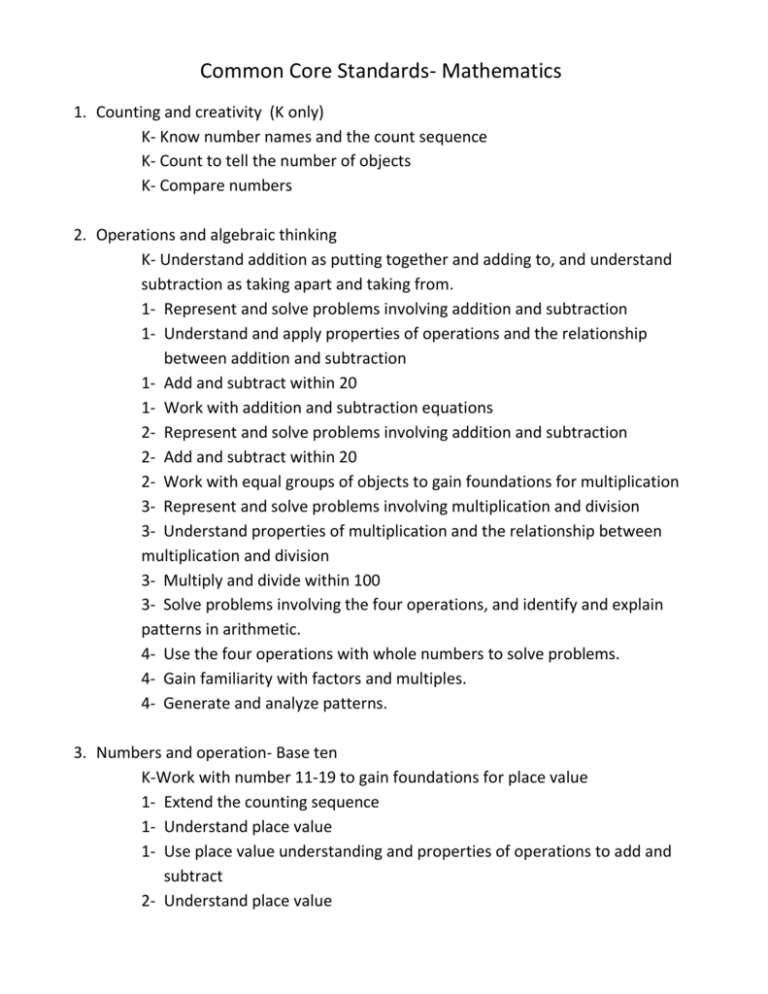
Common Core Standards- Mathematics 1. Counting and creativity (K only) K- Know number names and the count sequence K- Count to tell the number of objects K- Compare numbers 2. Operations and algebraic thinking K- Understand addition as putting together and adding to, and understand subtraction as taking apart and taking from. 1- Represent and solve problems involving addition and subtraction 1- Understand and apply properties of operations and the relationship between addition and subtraction 1- Add and subtract within 20 1- Work with addition and subtraction equations 2- Represent and solve problems involving addition and subtraction 2- Add and subtract within 20 2- Work with equal groups of objects to gain foundations for multiplication 3- Represent and solve problems involving multiplication and division 3- Understand properties of multiplication and the relationship between multiplication and division 3- Multiply and divide within 100 3- Solve problems involving the four operations, and identify and explain patterns in arithmetic. 4- Use the four operations with whole numbers to solve problems. 4- Gain familiarity with factors and multiples. 4- Generate and analyze patterns. 3. Numbers and operation- Base ten K-Work with number 11-19 to gain foundations for place value 1- Extend the counting sequence 1- Understand place value 1- Use place value understanding and properties of operations to add and subtract 2- Understand place value 2- Use place value understanding and properties of operations to add and subtract. 3- Use place value understanding and properties of operations to perform multi-digit arithmetic. 4- Generalize place-value understanding for multi-digit whole numbers. 4- Use place value understanding and properties of operations to perform multi-digit arithmetic. 3a. Numbers and operations- Fractions 3- Develop understanding of fractions as numbers 4- Extend understanding of fraction equivalence and ordering. 4- Build fractions from unit fractions by applying and extending previous understandings of operations on whole numbers. 4- Understand decimal notation for fractions, and compare decimal fractions. 4. Measurement and data K- Describe and compare measurable attributes K-Classify objects and count the number of objects in categories. 1- Measure lengths indirectly and by iterating length units 1- Tell and write time 1- Represent and interpret data 2- Measure and estimate lengths in standard units 2- Relate addition and subtraction to length. 2- Work with time and money 2- Represent and interpret data 3- Solve problems involving measurement and estimation of intervals of time, liquid volumes, and measure of objects. 3- Represent and interpret data 3- (Geometric measurement)- Understand concepts of area and relate area to multiplication and to addition. 3- (Geometric measurement)- Recognize perimeter as an attribute of plane figures and distinguish between linear and area measures. 4- Solve problems involving measurement and conversion of measurements from a larger unit to a smaller unit. 4- Represent and interpret data. 4- (Geometric measurement)- Understand concepts of angle, and measure angles. 5. Geometry K- Identify and describe shapes K- Analyze, compare, create, and compose shapes 1- Reason with shapes and their attributes (2D, fractional parts of shapes) 2- Reason with shapes and their attributes 3- Reason with shapes and their attributes. 4- Draw and identify lines and angles, and classify shapes by properties of their lines and angles.
